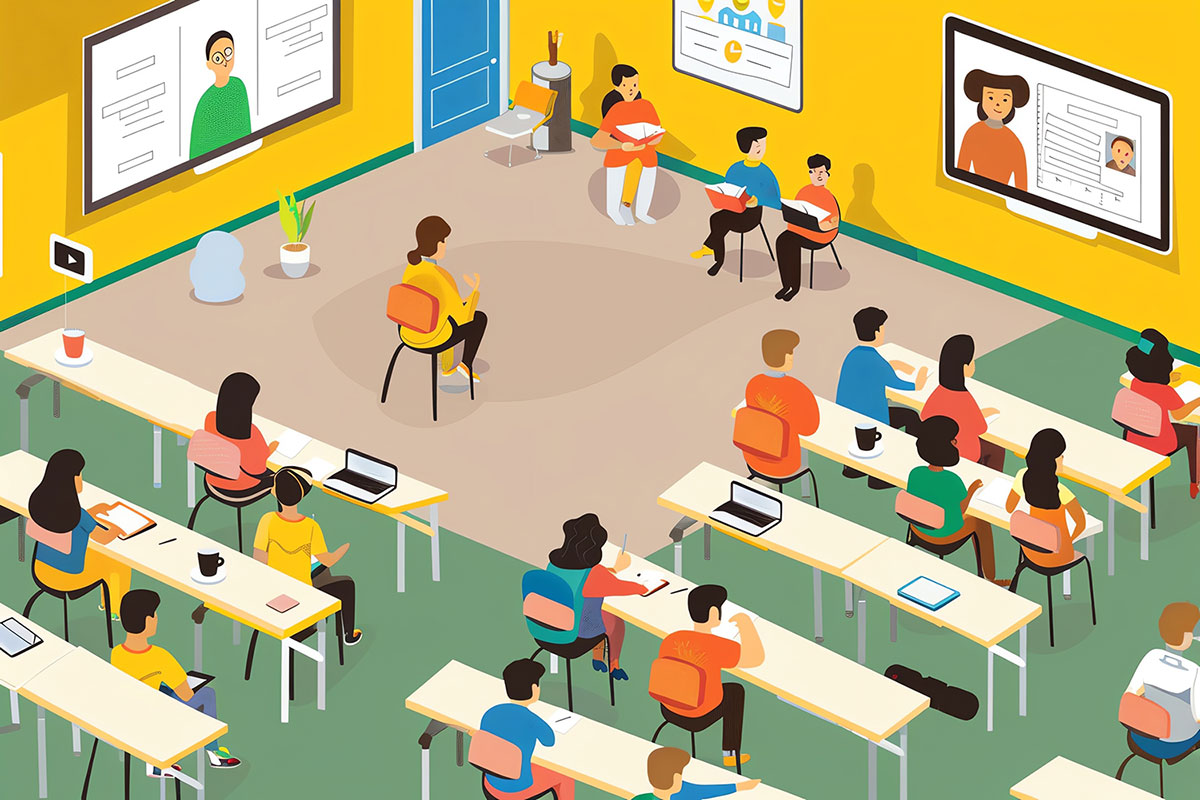The landscape of education is undergoing a significant transformation. Traditional classroom learning is evolving to include a blend of in-person and online instruction, known as hybrid learning. This approach combines the best of both worlds, providing flexibility, accessibility, and personalised learning experiences for students. Let's explore the rise of hybrid learning and how it is reshaping the future of education.

What is Hybrid Learning?
Hybrid learning, also referred to as blended learning, is an educational model that integrates traditional face-to-face teaching with online components. This approach allows students to attend some classes in person while participating in others remotely through digital platforms. By leveraging technology, hybrid learning offers a more dynamic and flexible educational experience.
The Benefits of Hybrid Learning
- Flexibility: Hybrid learning allows students to access course materials and participate in classes from anywhere. This flexibility is particularly beneficial for those with diverse schedules or who live far from their educational institutions.
- Personalised Learning: Online components of hybrid learning often include adaptive learning technologies that tailor content to individual students' needs. This personalised approach can enhance understanding and retention of material.
- Increased Engagement: The use of multimedia and interactive tools in online learning can make lessons more engaging. Students can participate in discussions, watch videos, and complete interactive exercises that reinforce their learning.
- Skill Development: Hybrid learning helps students develop important digital skills. Navigating online platforms, participating in virtual discussions, and managing digital assignments are all valuable skills in today's technology-driven world.
The Changing Role of Educators
With the rise of hybrid learning, the role of educators is also evolving. Teachers are no longer just dispensers of knowledge; they are facilitators of learning experiences that blend in-person and online instruction. Here are some ways the role of educators is changing:
- Technology Integration: Educators must be proficient in using digital tools and platforms to deliver content and engage with students. This includes everything from virtual classrooms to online assessments.
- Personalisation: Teachers are leveraging data from online learning platforms to understand students' strengths and weaknesses. This data-driven approach allows for more personalised instruction and support.
- Collaboration: Hybrid learning encourages greater collaboration among educators. Teachers can share resources, strategies, and insights to improve their teaching practices and better support their students.
- Continuous Learning: The rapid pace of technological change means that educators must be committed to continuous professional development. Staying up-to-date with the latest tools and methodologies is essential for effective hybrid teaching.
Challenges and Solutions
While hybrid learning offers many benefits, it also presents challenges that educators and institutions must address:
- Digital Divide: Not all students have access to the necessary technology and internet connectivity. Schools and governments need to work together to ensure equitable access to digital resources.
- Training and Support: Educators need proper training and ongoing support to effectively implement hybrid learning. Professional development programmes and technical assistance are crucial.
- Student Engagement: Keeping students engaged in an online environment can be challenging. Educators must use a variety of interactive tools and strategies to maintain student interest and participation.
- Assessment: Assessing student performance in a hybrid model requires innovative approaches. Combining traditional assessments with online quizzes, projects, and discussions can provide a more comprehensive picture of student learning.
The Future of Hybrid Learning
The shift to hybrid learning is more than a temporary response to the COVID-19 pandemic; it represents a long-term change in the educational landscape. As technology continues to evolve, so will the ways we teach and learn. The future of education lies in a flexible, personalised, and technology-enhanced approach that meets the diverse needs of all students.
Educational institutions, policymakers, and technology providers must work together to create a supportive and innovative environment for hybrid learning. By embracing this new model, we can ensure that education remains relevant and effective in a rapidly changing world.
Conclusion
Hybrid learning is revolutionising the way we think about education. By blending traditional and digital teaching methods, we can create a more flexible, engaging, and personalised learning experience for students. As we navigate this changing landscape, it is essential to address the challenges and seize the opportunities that hybrid learning presents. The future of education is hybrid, and it holds the promise of a more inclusive and effective learning environment for all.
